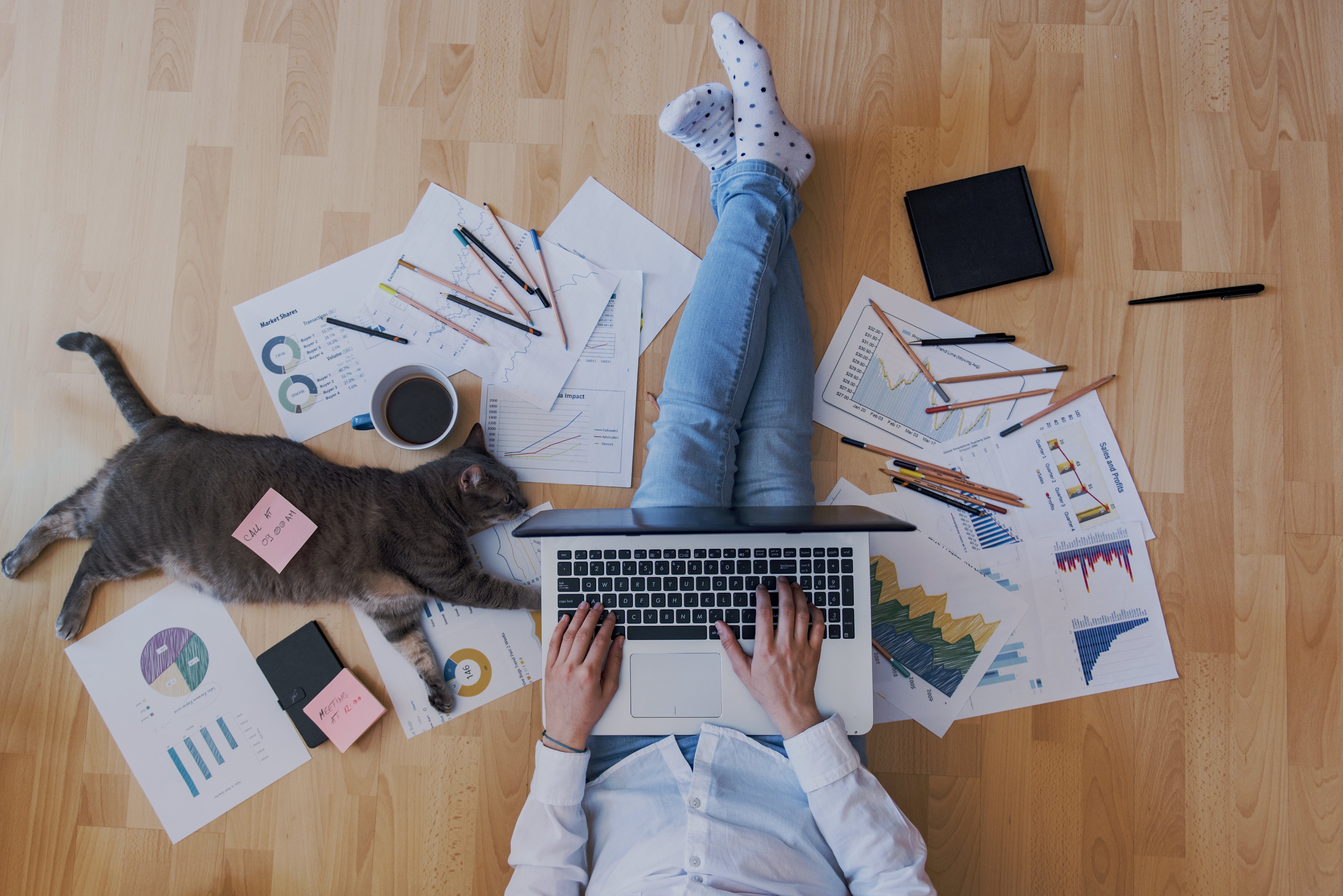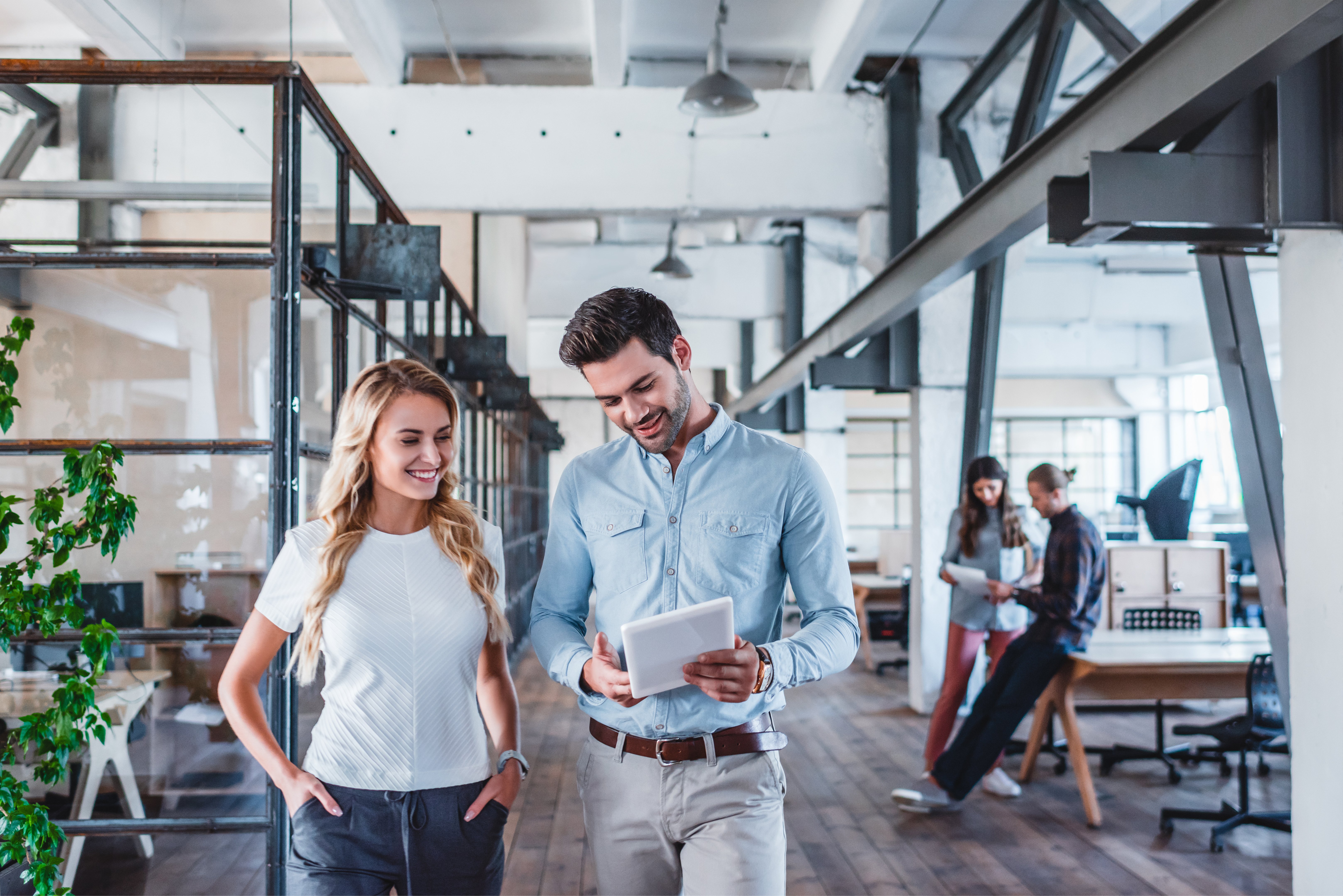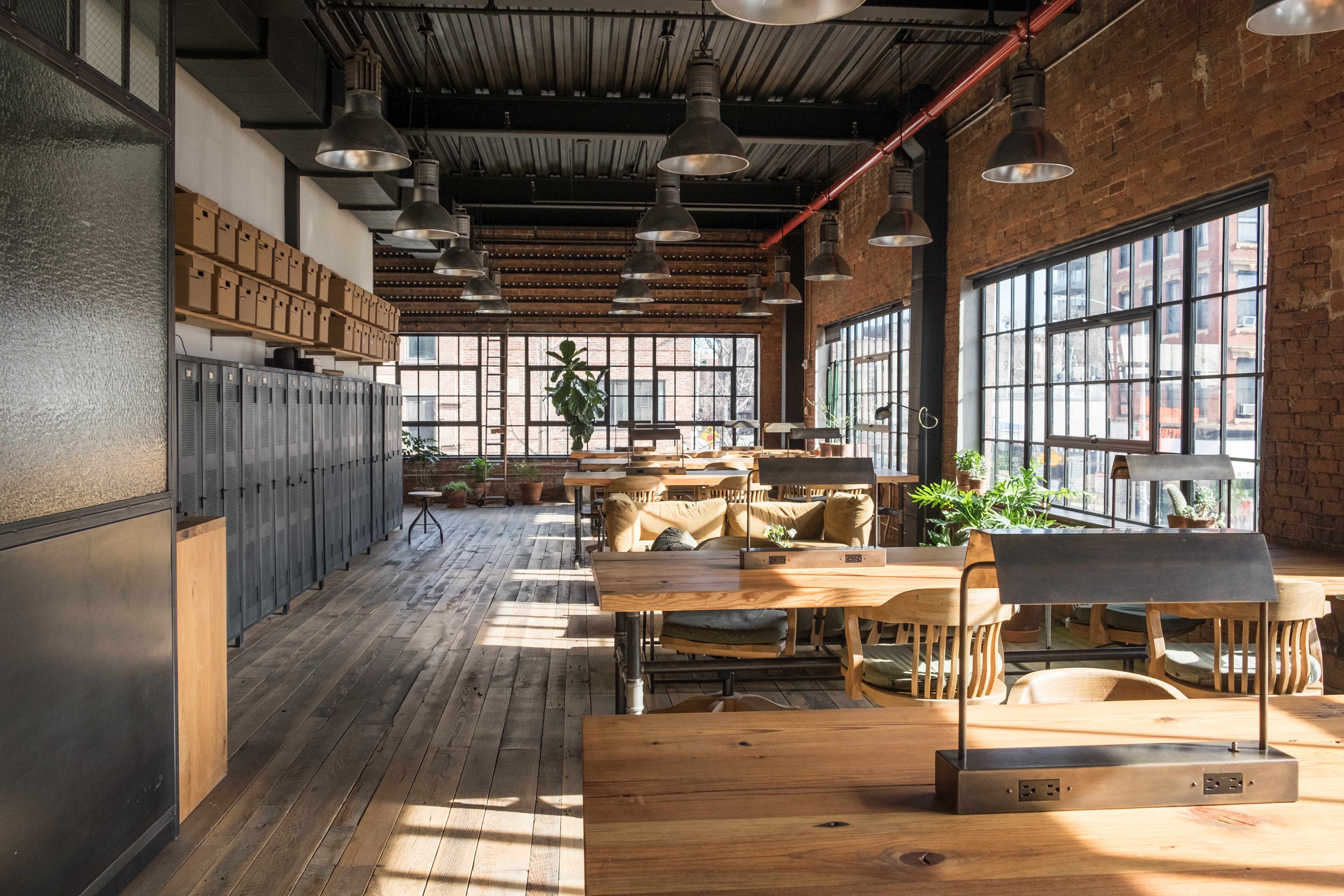Office Architecture: How Workplace Design Affects Employee Behaviour
Karl Elhen
May 26, 2021 1:00:55 PM
People spending 40+ hours per week working at home in place of the office over the past year has sparked a new evolution in office design. We’ve discovered how workers can be both productive and comfortable in their office space, and we’ve learned that our surroundings have profound impacts on our attitudes, behaviour, and productivity.
It’s no surprise that poorly designed offices can quickly lead to demoralization and fatigue, and with people having become accustomed to working in their homes, employers and office designers alike need to consider what they can do to make workers want to return to the office.

An architect equipped with the proper knowledge and tools can create a space where workers feel comfortable, supported, and motivated—a space that will have them excited to return to the office.
In this blog post, we’ll discuss some design choices that positively impact employee behaviour and how you can incorporate them into your projects.
The design choices that positively impact employee behaviour include:
- Natural design
- Flexible workspaces
- Collaboration spaces
- Natural light
- Storage spaces
- Comfort
Natural design
Humans are meant to be outdoors and use teamwork to solve problems—it’s part of our instincts, so we need to do all we can to recreate this feeling within the office space. Natural design that channels humans’ inherent attraction to nature is a popular trend because it stimulates well-being and focus.
A biophilic approach to design extends to the use of colour, material, indoor plant selections, artwork, photography, patterns, and more as they help to reinforce the connection to nature.
Flexible workspaces
Your client will need to accommodate different types of workers. Introverts and extroverts energize differently, which is why refuge spaces are important. At the very least, designing the office with flexible working arrangements in mind can create an environment where different types of workers can self-govern, allowing them to work in the spaces where they feel most energized, comfortable, and productive.
For example, letting workers move around freely from their desks to unused conference or breakout rooms when they need to be alone and hyper-focused.

Collaboration spaces
If flexible workspaces aren’t an option for your client, a good alternative is to design collaboration spaces. Creating an office culture where collaborative or decompression time can occur in designated common areas away from individual workspaces will keep distractions to a minimum.
Data collected by Entrepreneur found that virtually anything impromptu will knock workers out of their workflow, so it’s essential to recommend spaces your client’s employees can use to be collaborative without derailing the productivity of employees not participating in group work.
Additionally, short breaks away from workstations can relieve cluttered minds. The option of breakout rooms will help employees change scenery to recharge and pick up their tasks with renewed productivity.
Natural light
Humans have a profound psychological response to natural light, and staff working in offices designed with tons of natural light will typically be healthier and perform at higher energy levels. Workplace studies have shown that good exposure to natural light and outdoor views reduce stress and boost employee mental well-being and productivity.
Of course, not every office in a building can be located near a window, so smart choices with glass walls and large open spaces can promote more sunlight exposure into office spaces. Architectural glass walls can create distinct spaces without obstructing light from surrounding windows.
Storage space
One complaint of office users is lack of storage. Unorganized workstations increase stress levels, so consider how you can fit storage spaces or furniture with ample storage into your designs.
Workers often have multiple responsibilities, which cause stress, and workers can get even more stressed out if any relevant task or project-related information is lost or forgotten. Using tack-able surfaces, whiteboards, and other large message walls people can use to keep track of their tasks can help keep their stress levels down and productivity up.
Additionally, high-density storage walls can serve two purposes:
- They can be an effective partitioning solution to divide up individual workspaces.
- Floor-to-ceiling storage units can increase storage capacity without eating up valuable floor area.

Designing with comfort
Comfort is critical to physical and psychological well-being. In addition to physical comfort, i.e., ergonomic workstations, which have been proven to increase employee wellness and productivity, it’s important to consider psychological comfort as well.
During the pandemic, millions of people worked from home and became accustomed to a certain level of comfort. As a result, many employers are changing some characteristics of their offices to encourage a homier feel. Having a casual environment helps bring calm and comfort to the workspace. Designers can embrace this concept using soft seating and living room style spaces in their designs.
Don’t forget that sanitation is increasingly vital in the modern office, too, so you’ll want to use more cleanable surfaces. Antimicrobial fabrics aren’t the café diner vinyl of yesteryear, which means you have more aesthetic choices in your arsenal.
Weave the casual aesthetic everywhere you can, and don’t forget you can create a more hospitable feel with accents like graphics or other accessories.
Making positive design choices
Office design has a significant impact on workers’ physical and mental well-being. To ensure the effect remains positive and supportive rather than draining, architects and designers should take an employee-centred approach to design rather than a job-centred one.
You can learn more about the design trends that put employees first in our modern office design guide.
